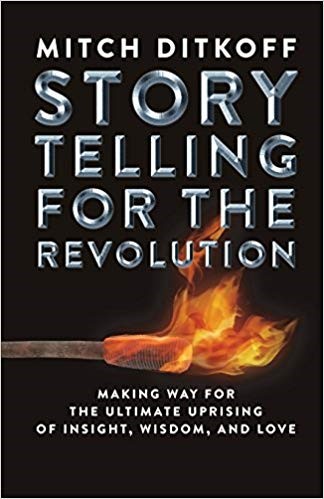BETTER THAN THERAPY: What Stressed Business Partners Can Learn From the Police Reunion Tour
Making great music together isn't always easy, no matter how famous your band is. Nor is it easy being business partners, collaborators, teammates, or "significant others". If you want to make some serious music together, "creative dissonance" is inevitable. Count on it. The question isn't whether or not band mates or business partners will experience breakdowns. They will. The question is how committed are they to breaking through and coming out the other side.
Idea Champions
Bridging the Gulf
Becoming an Adaptive Leader
Our clients, past and present
Posted by Mitch Ditkoff at 07:43 PM | Comments (0)
June 27, 2016Why You Need to Defer Judgment During the Ideation Phase of a Brainstorming Session

Big thanks to Val Vadeboncoeur, Idea Champions' Director of Training, for this timely article on the importance of deferring evaluation during the ideation phase of a brainstorming session.
When Alex Osborn, co-founder of the advertising firm, BBD&O, first came up with the basic concept of brainstorming way back in the 1940's, he stressed that during idea generation "we should hold back criticism until the creative current has had every chance to flow." This principle of "deferring evaluation" of ideas until later has been a bedrock principle of brainstorming ever since. Osborn noted that human beings are of of two minds, what he called the "imaginative" or creative mind and the "judicial" or judging mind. These days, we tend to refer to these in the psych jargon of "right and left brains" today.
According to Osborn, the job of the imaginative mind was to generate ideas and see visions, while the job of the judicial mind was to analyze the ideas and select the best ones for implementation. His theory was that by deferring judgment during brainstorming we kept the critical faculty, the judging mind, from "jamming the creative faculty," the imaginative mind.
Why does this work? If you've ever experienced "writer's block," then you may well know the answer.
When a writer finds herself in the throes of being unable to create new work, the main obstacle usually is that the writer is making the very same error that brainstormers would make by trying to simultaneously generating ideas while evaluating them.
In the case of writer's block, what is often happening is that the writer is trying to write something new while editing it at the same time. This creates an endless start/stop loop of creating and judging which is frustrating to say the least. As soon as a sentence or phrase is written, the judging mind jumps in to evaluate it. "Is it too boring? Too whacky? Didn't you say this before? Will the reader understand it? Can it be said better? In a more concise way? Is that the right word there?"
No wonder some writers go mad.
The solution for this problem is simple. Write at one designated time and edit what you write at another and always keep these two disciplines separate.
Maya Angelou would write in the morning and edit in the afternoon. Ernest Hemingway did the same. Joan Didion has a similar routine. Didion says that she writes for as long as she can in the morning and then in late afternoon, right before dinner, she has a drink and goes over what she wrote earlier in the day. "The drink helps," she says.
Some writers write for many days at a time before going into the editing mode. But, the effective pattern is clear -- writing should be a separate activity from editing.
The same goes for the creative act of brainstorming. Osborn advised having TWO brainstorm sessions at different times. The first session was designed to generate the ideas and the second was to analyze, select and develop the best ones.
In my experience, if you have enough time, you can do both in sequence in the same session but you have to keep these two events completely separate by including a break between them.
Enforcing the ground rule of "deferring judgment" during the idea generation segment of a brainstorming session is very important. I often say to miscreants "right now, all ideas are innocent until proven guilty. You'll have your opportunity to shoot them down later. Just not now."
If you ignore this basic fact of creativity -- that the imaginative mind must be given free rein to run without the constraints of the saddle, stirrup and harness of the judicial mind -- then you put yourself and your participants in danger of brainstorm asphyxiation.
You know the scene. A brainstorm participant volunteers an idea and, automatically and on cue, another participant tells everyone why he it won't work. The idea is withdrawn and never captured, or even worse, a long argument ensues back and forth as to the merits of the idea. If this continues for any length of time, everyone becomes frustrated and annoyed. And your brainstorm session can't even get started.
You know the cure. Keep the idea generation phase of brainstorming sacrosanct from the judgments of the left (or judicial) brain by enforcing the brainstorm ground rule of deferring judgment.
You can let the left brain out later to do what it does best -- compare and contrast. Weigh. Measure. Sort. And choose.
But never let both sides of your brain out together at the same time -- a sure path to madness... and a really frustrating brainstorming session.
High Velocity Brainstorming
Brainstorm Training
Idea Champions
Posted by Mitch Ditkoff at 10:38 PM | Comments (0)
June 23, 2016GOT A BRAINSTORM SESSION TO FACILITATE? Remember Yourself!

Big thanks to Idea Champions' Director of Training, Val Vadeoncoeur, for this insightful post on the power of mindset.
One of the biggest blind spots we human beings have, and one of the most common, is forgetting to include ourselves in the calculation. It's almost as if we believe we don't matter or as if our intentions or the manner in which we do something won't play an important role in affecting the outcome. Not true. It does.
Otto Scharmer of The Presencing Institute in Cambridge, MA elaborates on this curious phenonmenon:
"Why do our attempts to deal with the challenges of our time so often fail? The cause of our collective failure is that we are blind to the deeper dimension of leadership and transformational change. This blind spot exists not only in our collective leadership, but also in our everyday social interactions. We are blind to the source dimension from which effective leadership and social action come into being. We know a great deal about what leaders do and how they do it. But we know very little about the inner place, the source from which they operate.

Scharmer goes on to quote Bill O'Brien, former CEO of Hanover Insurance.
"When I asked him (O'Brien) to sum up his most important learning experience in leading profound change, he responded, 'The success of an intervention depends on the interior condition of the intervenor.'"
Not surprisingly, this great truth also applies to your challenge as a brainstorm facilitator. Are you truly doing everything you can to get yourself ready for the optimal performance of your duty?
You've gotten the room. You've invited the right people. You've worked out a meaningful agenda and focused on the right question. Everything appears to be in order -- except for one thing. The state of your mind, heart. and soul. In other words, yourself.
Without doing so, the odds of you being uncentered, unfocused, and less-than- vibrant will increase, resulting in the quality of the sessions you facilitate declining.
What follows are nine practical tips to ensure that you will be at your best when it comes time to facilitate an effective brainstorm session:
1. VISUALIZE THE SESSION the night before: See yourself confidently and successfully facilitating each part of your agenda.
2. UNPLUG FROM OTHER PROJECTS at least an hour before your session. There is no need to schedule distracting activities or important meetings right before your session.
3. REVIEW YOUR AGENDA at least an hour before the session. Know the flow of what's to come, what you want to accomplish, and what you want to say to move the agenda forward so it all makes sense to participants.
4. SHOW UP AT LEAST 30 MINUTES BEFORE the session to set up the room. Even if your set-up is minimal, the act of simply moving objects into their proper position and cleaning up messy sight lines will help you put your stamp, your energy, into the room.
5. VISUALIZE THE RESULTS YOU WANT -- with people engaged and happy to be there; you calm, focused, clear-headed and articulate; lots of great ideas being generated; lots of kudos for a job well done.
6. DO WHATEVER RELAXATION TECHNIQUES ALREADY WORK FOR YOU: They will help put you in the zone. There is no reason not to do them. If they work, they work and and will work before you begin your session. If you don't know of a way to center yourself and relax before going "on stage", then find a way.
7. SET YOUR INTENTION AT THE HIGHEST LEVEL: One way to do so is to complete the following sentence: "I want to be at my very best so that..."
8. PLAY YOUR FAVORITE MUSIC as you set up for your session -- and have some instrumental music playing as people enter the room. This will not only relax you, it will relax participants -- helping them make the transition from their left-brained business minds into their more right-brained creative minds.
9. COMMIT TO HAVING AS MUCH FUN AS YOU CAN: If you are enjoying the moment, chances are good that others will, as well. This can only help.
Which of these "get the zone approaches" will YOU do before your next brainstorm session? And what else might you do to ensure that you don't forget about YOURSELF before facilitating the session?
Idea Champions
Brainstorm Champions
What our clients say
Tell us more about your need
Posted by Mitch Ditkoff at 06:36 AM | Comments (0)
June 17, 2016JUST SAY YES!

Idea Champions is thrilled to welcome Dr. Barry Gruenberg to it's team of consultants, facilitators, and bloggers. Here is Barry's latest pearl of wisdom.
When somebody asks you if you can do something, just say YES. You can always figure out how later. Indeed there is a good chance that what you are being asked for is not what's really needed, anyway.
We often evaluate the value we can add to a situation by imagining that there is someone else who really has the required expertise. We interpret our uncertainty as a testimonial to our inadequacy as compared to the imagined expertise of the presumed, all-knowing other.
Actually, our uncertainty and humility are essential elements of what we bring to the party; they drive our curiosity about what is really going on and help us listen to multiple points of view on the problem without having preconceived ideas about solutions.
Developing a deep understanding of what a problem truly consists of is a much more valuable contribution than providing a pre-conceived solution; devising solutions is easy once we have a robust problem statement.
The problem with high levels of expertise?
1. When you have a hammer, everything looks like a nail
2. If you have to appear as an expert, you have little opportunity to learn anything new.
In today's world, characterized by unprecedented new technologies and business models, we are much more likely to find ourselves facing adaptive challenges that require new ways of thinking and acting. So embrace your ignorance and go for it!
Barry's workshop on listening
Idea Champions
Barry on what leaders can do to foster innovation
Posted by Mitch Ditkoff at 09:38 AM | Comments (0)
June 16, 201620 Easy Ways to Spark Innovation

Many forward-thinking organizations, these days, are launching all kinds of initiatives to crank up innovation. Their intention is a good one, but their execution is often not. While there's nothing inherently wrong with "organizational initiatives", they often end up being overly complicated, vague, and painfully impersonal. They may look good on paper, but real innovation doesn't happen on paper -- it happens in another dimension -- the human dimension -- the realm of authentic interaction, not theoretical interfacing.
Towards that end, I invite you to consider another, more informal approach -- simple, no-cost ways of radically increasing the odds of the people you work with becoming proactive, inspired, and successful innovators on the job. Here goes:
1. BE CURIOUS: One thing is certain: aspiring innovators are on to something. If you are interested in increasing their odds of success, your first task is to find out what, precisely, has captured their attention. Curiosity may have killed the cat, but it greatly enlivens the person on the brink of a new possibility.

2. LISTEN DEEPLY: People with a new idea often need to express what they're thinking in order to fully understand what they're conjuring. Listening is the main way you can help -- not so you'll have something wise to say in response, but so you can create a safe haven for others to explore the nuances of their new ideas.
3. ASK POWERFUL QUESTIONS: You may be someone's boss or have multiple degrees, but that doesn't mean you have all the answers. Indeed, when it comes to sparking innovation, asking questions -- at the right time and in the right way -- is more important than giving advice. It is often the only thing you need to do.
4. REFRAME THE CHALLENGE: As an innovation catalyst, one of the biggest contributions you can make is to ensure that the innovators in your life have clearly defined their projects. Probe. Poke. Provoke. See if there is another, more elegant way they can define their goal -- starting with the words "How can I?" or "How can we?"
5. ELIMINATE BUREAUCRATIC OBSTACLES: Innovators have enough to worry about without having to navigate the often Rube Goldberg-like maze of corporate systems and the ever-changing marketplace. Be their advocate. Demystify the roadblocks. Identify what's in their way and do what you can to eliminate the obstacles.
6. PROVIDE RESOURCES: Carpenters need tools. Hikers need backpacks. Musicians need instruments. Innovators? This, that, and the other thing. Your task? To identify the resources they need and see what you can do to locate them. Funding? Software? Collaborators? An introduction to movers and shakers? Something else?
7. COACH: Even the best athletes in the world perform better when they have the support of someone on the sidelines who knows the game and how to spark their potential. If you want to spark innovation in others, know that you will need to be a coach from time to time. But first, you need permission.
8. GIVE FEEDBACK: Aspiring innovators go back and forth between being overly intoxicated with their new ideas and being overly sober. Immersed in their own creative process, they lose perspective, with only the sound of their thoughts for company. What they need is timely feedback. And they need it from you.
9. DO THE BREAK DANCE: Committed innovators have a tendency to obsess about their projects. Not only does "all work and no play" become their mantra, they often leave little time for rest and renewal. Sometimes, the best thing an innovator can do is nothing -- and you can help by reminding them, from time to time, to take a break, chill, and do something different for a change.
10. GO BEYOND THE CALL OF DUTY: Attempting to create something new is rarely easy. It's messy, frustrating, and often requires a big dose of the heroic. If you are going to be someone's innovation ally, know that one of your jobs is to go beyond business as usual and extend your support in surprising and extraordinary ways.

11. CELEBRATE SMALL WINS: One challenge with trying to innovate is that it takes a lot of time. Results often don't show up for years. As you can imagine, this can be deflating. The remedy? Regularly acknowledge "small wins" -- positive results-- no matter how small. As Tom Peters once said, "Celebrate what you want to see more of".
12. REINFORCE THE VISION OF SUCCESS: Anyone attempting to create something new has a tendency to get lost in details and doubts -- often not seeing the forest for the trees. They lose the big picture. The remedy? At every turn of the bend, get the innovators in your life talking about their wishes, dreams, and hoped for outcomes.
13. TELL INSPIRING STORIES: When innovators get stuck, it's usually because of self-talk -- their internal critic that thrives on doom and gloom. You can counter this phenomenon by telling stories with the power to neutralize self-talk -- true tales of your own creative breakthroughs or the tales of others who have gone beyond obstacles to manifest magic in the world.
14. QUOTE FROM THE INNOVATION MASTERS: Sometimes a single word or phrase is all an aspiring innovator needs to get their mojo back. Or a soundbyte from someone they respect -- a person who's "been to the mountain" and distilled what they learned down to a quotable quote. Here are is our treasure trove of quotes.
15. MODEL THE SPIRIT OF INNOVATION: It's hard to spark innovation in others if the spark is not alive inside of you. Not only will the aspiring innovator see right through you, they won't take any of your council to heart -- even if it's true. Your responsibility? Walk your talk. Practice what you preach. If you don't, you're just wasting your time and everyone else's, too.
16. DECREASE THE FEAR OF FAILURE: One of an innovator's biggest triggers is their fear of failure. Your mission is to help them reframe their concept of "failure" and, instead, see it as a progression of noble experiments -- opportunities for feedback so they can course correct, continue learning, and be as resilient as possible.
17. GROUND: Aspiring innovators often have their heads in the clouds, an important place to inhabit from time to time, but it is only half the story. Innovators also need to have their feet on the ground. You can help by getting them to plot in specific days and times, on their calendar, to work on their innovation project. You can also ask them to commit to specific deliverables and "by when" dates.
18. BE THE COUNT OF ACCOUNTABILITY: In the heat of battle, aspiring innovators often make promises they do not keep. Or, afraid of breaking their promises, never make them in the first place. If budding innovators work alone, there is no one around to notice this phenomenon. Your task? Ask them what they want to beheld accountable for and then check in at regular intervals.
19. EXPAND THEIR SUPPORT NETWORKS: One thing you don't want to do is establish a co-dependent relationship with innovators seeking your support. It's not only dumb, it's unsustainable. The alternative? Encourage them to enroll support from their existing network of friends and colleagues -- people they can depend on for input, feedback, and encouragement.
20. CHECK IN FROM LEFT FIELD: If you really want to spark innovation in others, pick up the phone from time to time and call. Actually talk to the person. Ask how they're doing. Listen. Stir the soup. See what they need. Assuming you are trusted, your out-of-the-blue contact will awaken, encourage, and inspire -- helping those on the cusp of a breakthrough to stay on track and on fire.
This article in HuffPost
Idea Champions
One of our innovation workshops
Posted by Mitch Ditkoff at 10:55 AM | Comments (0)
June 07, 2016HOW TO GET PEOPLE OUT OF THE BOX: A 5-Minute Tutorial

Ever heard the expression "get out of the box?" Of course you have. Ever wonder what the six sides of that so-called box actually are? If not, here's your 5-minute tutorial of the day. Once you're clear about what the sides of the box are, you will be significantly more able to help people (and yourself) get out of it.
One way to get out of the box
Another way
My book on the subject
Boxes
Posted by Mitch Ditkoff at 11:24 AM | Comments (0)














